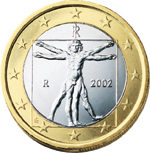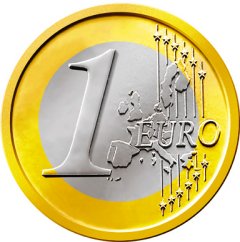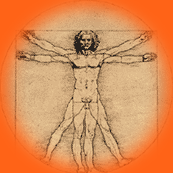
| welcome | ||||||||||||||
| history | ||||||||||||||
|
||||||||||||||
| reconstruction | ||||||||||||||
| today | ||||||||||||||
|
||||||||||||||
| links | ||||||||||||||
| about this site |



While many countries chose to honor leaders or reflect traditional icons with the country-specific side of their new Euro coins, Italy selected eight images highlighting her artistic and architectural legacy. As the image on the 1-Euro coin, the Vitruvian Man is a focal point in depicting this legacy.
 |
 |
| source: Inside Europe | source: Euro Information |
Italians were quite heavily involved in the selection of the images for their
Euro coins. A Technical and Artistic Committee pre-selected euro coin designs
on the basis of opinion polls, and over 1.5 million television viewers made
the final decision by phoning in during a special Sunday broadcast on Italy’s
largest national television station.
A different design was selected for each denomination; images include, in addition to the Vitruvian Man, the head of Venus from Boticelli's "Birth of Venus," the Colleseum, and Umberto Boccioni's Futurist sculpture "Unique forms of continuity in space."
As Ciampi, Italian Minister of the Treasury, stated at the announcement
of the selection of the Vitruvian Man,
"Rappresenta il dinamismo - ha spiegato - e' il giusto segno di misura
e armonia. E ricorda che la moneta e' al servizio dell'uomo".
(rough translation:"[The Vitruvian Man] represents dynamism," he
commented. “He is the appropriate sign of measure and harmony. And, he
reminds us that currency is in the service of man.")
The official documentation from the ECU-Activities newsletter (European Currency Unit) says that the selection of the Vitruvian man "symbolizes the Italian Renaissance and the desire for harmony between man and the universe."
Additionally, a Greek poll voted the Italian 1 euro coin the "most beautiful" of the 12-national euro coins. Apparently, not just the Italians are fond of the Vitruvian Man.
What are the Italians saying with their selection of the Vitruvian Man for their 1-euro coin? Some options include:
highlighting artistic heritage
reminding other countries that the Renaissance happened in their country (other Renaissance images selected for coins include Venus from Boticelli’s “Birth of Venus,” the statue of Marcus Aurelius restored by Michelangelo, and Raphael’s portrait of Dante)
pride in countryman Leonardo
emphasizing the primacy of man – as the treasury minister says, “Currency is in the service of man.”
Italy’s citizens are reflected in this ideal man
ECU-Activities Newsletter: http://www.ecu-activities.be/password/europapers/europapers37en.html#2
Deutsche Presse-Agentur, 2002, Leonardo's euro symbol on display in Venice
Marco Sartorelli, I volti dell'euro italiano; Un milione e mezzo scelgono
Dante, il Colosseo e la Venere. Ciampi impone Leonardo, La Stampa, February
9, 1998.
In a completely different vein, Chef Express is a pizza franchise in India. It aims to project an image of connection with Italy through the use of Renaissance art images. On their website, the Vitruvian Man has a remarkable similarity to pizza...
 |
 |
| source: Chef Express | |
As evidenced by their selection of images for the Euro, Italians see the Vitruvian Man as a representation of them and their country. Apparently, Indian pizza-makers do too!